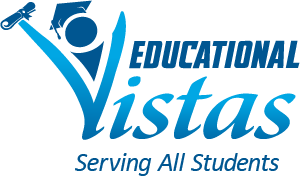The School Principal – Education Silos and
Loss of Integrated Knowledge & Skills
I studied the challenges of addressing silo effects in education. Silos are structural that restrict information and learning flow between courses and subjects and those that teach them. It projects an education system that is not systemic, but rather isolated due to a lack of shared benefits for both teachers and their students.
The Problem with Education Silos
Silos have a historical arc from early influences on American education, particularly the Prussian influence that prescribed discrete courses. So much of American education was a result of Horace Mann’s fact-finding tour of European schools in 1843 in which he took a particular interest in the Prussian school system while he was Secretary of the Massachusetts Board of Education. To this day the discrete courses are the mainstream structure of middle and high schools, and to some extent elementary schools.
Discrete courses provide information and knowledge within a select field of study in which relationships with others are limited or nonexistent. For example, a subject maintains its own area of study without providing for the natural collaboration with one or more other subjects which may and can affect a deeper understanding of the area.
Modification or Elimination of Education Silos
Granted that the nature of some courses and subjects may best be discrete. However, others lend themselves to integration and some silos in education have been deconstructed. Cross-curricular approaches are a perfect example. For example, when education reformer Ted Sizer visited a high school and was asked to comment on what he had seen, he asked, Why is U. S. History taught in the morning and American Literature in the afternoon? The response was, Well, that’s the way scheduling sets up the courses. To add further interest to silo effects, the question was asked, Why is English taught as a discrete course, rather than integrated throughout all subjects? There are many instances in which learning may be integrated to provide a fulsome understanding of the reality of what is being learned. Relationships in science and math are other situations that would welcome integration. Just imagine the influences of art and music across all subjects. This is a curricula matter which should enliven it while putting a new face on how students learn.
Time the Biggest Restraint on Removing Silos for Greater Integration
As subject and courses are currently confined to constant time frames, it will require significant effort to deal with time creatively to eliminate some silos. However, the power of technology may be the answer to control time in a manner that will foster integration of learning. Educators will benefit as much as their students in a system where time and the extent students learn is managed.
This is the time to bring this important matter into focus if learning is to resemble reality of how our world works.
 Dr. Bruce H. Crowder is a senior researcher for Educational Vistas, Inc. His work is primarily focused on creating pathways for deeper learning for all students through student performance and a dynamic curriculum replete with strategic teaching. Dr. Crowder may be reached at bcrowder@edvistas.com
Dr. Bruce H. Crowder is a senior researcher for Educational Vistas, Inc. His work is primarily focused on creating pathways for deeper learning for all students through student performance and a dynamic curriculum replete with strategic teaching. Dr. Crowder may be reached at bcrowder@edvistas.com


